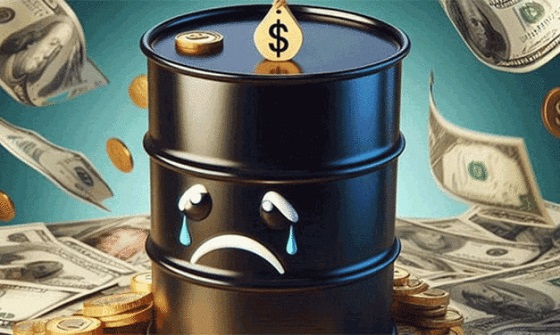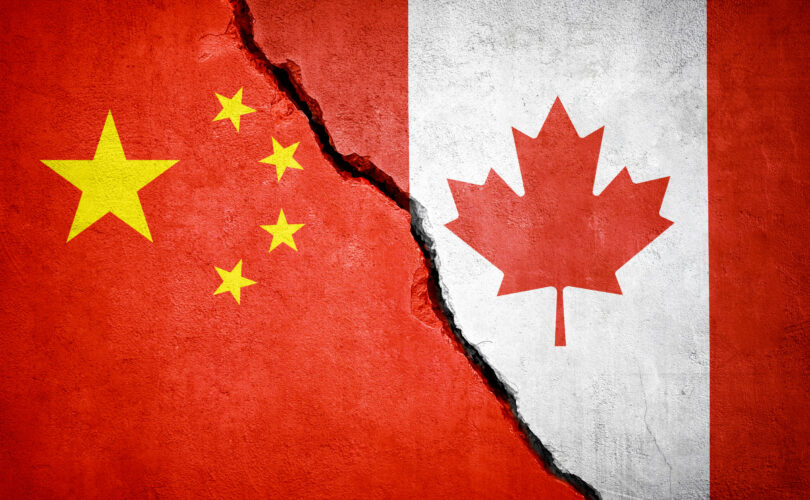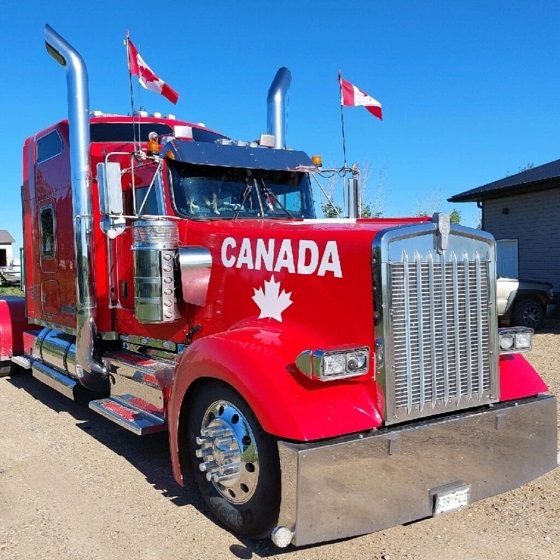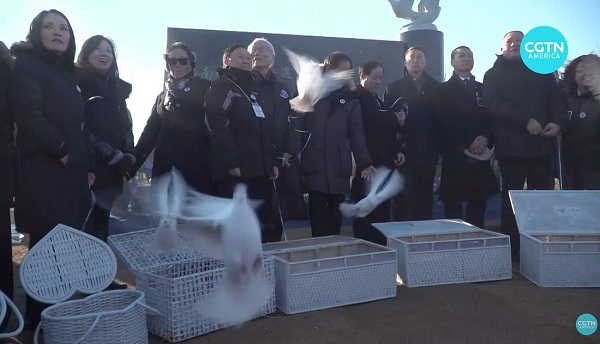Energy
Canada creates a brand new fossil fuel subsidy – Awkward: Etam

From the Frontier Centre for Public Policy
By Terry Etam
Upon hearing about the federal government’s decision to roll back the carbon tax on heating oil, I rolled up my sleeves. The point of writing about energy at all is to try to illuminate some aspect of an energy topic from a viewpoint inside the energy sector; to explain some energy nuance that the general population, which cares little for the nuances of energy, may find valuable. Energy is not simple, and there are a lot of loud storytellers out there, selling magical beans and wishful thinking.
To me, the carbon tax rollback was an annoyingly flagrant bit of vote-buying, yet another irritant from the federal government but one that, on centre-stage, seemed to have far less potential for cross-country histrionics than, for example, the time the prime minister threw his talented and principled First Nations minister under the bus. Now that was a shockwave.
This carbon tax vote grab? Ha. SNC Lavalin, Jody Wilson-Raybould, the WE Charity scandal, foreign interference… a heating oil subsidy doesn’t even crack an annual top-ten list of federal governance dirty diapers.
Or so I thought. Hoo boy. The Hail Mary scheme has blown up, blown up real good. Critics are everywhere, from across the political and environmental spectrum. Liberal heavyweights are attacking Trudeau; economists that love the carbon tax for its ‘efficiency’ are declaring the carbon tax dead. Incredulously, premiers have voiced a unanimous opinion that the entire country needs to be treated consistently.
Upon further thought, it shouldn’t be a big surprise that even the hard core climate crowd is displeased. The federal government has been lavish with announcements and proclamations about eliminating fossil fuel subsidies, that they would do so faster than imaginable, that, well, read their words for yourself: “Canada is the only G20 country to phase out inefficient fossil fuel subsidies ahead of the 2025 deadline. We are the first country to release a rigorous analytical guide that both fulfills our commitment and transparently supports action.”
“What the hell is this?” appears to be the consensus among a disparate group of voices that reaches consensus on nothing.
Be very clear why there is outrage: this is a shallow, obvious vote grab that crumbles the pillars of this government, and it most definitely is a creation of a brand new fossil fuel subsidy – so much for international credibility after all the hectoring this government has done globally. (If you have any doubts that this is anything but a political maneuver, consider that almost exactly a year before, in October 2022, the Conservatives tried to pass a motion to exempt home heating oil from the carbon tax, and all Liberal MPs save one brave Newfoundlander voted against it.)
Since the whole topic of the carbon tax has now come up though, here is a critical point that warrants some thought.
Canada and the US have chosen two different strategies to reduce emissions. Canada has, of course, the carbon tax – if you use or burn hydrocarbons, you’re going to pay (certain rural maritimers temporarily notwithstanding). Governmental, and government friendly, economists contort themselves into pretzels to demonstrate that the rebates handed back by the federal government “more than compensate” for the carbon tax, but every citizen that goes to a grocery store and realizes that every item in the industrial chain that handled any of those products in this country paid their own carbon tax, and that all that is rolled into the end product, has a very strong real-world suspicion that the government’s equation is laughable.
Beyond that, there is a big problem with Canada’s ‘stick’ approach to carbon reduction. Canadians can choose to limit the impact of the carbon tax by switching to something less carbon intensive, or spending to otherwise limit emissions. You don’t want to pay the carbon tax, you or your business? “No problem!” Says the federal government; just spend some exorbitant amount of capital, based on frameworks and guidelines that are not yet even ready.
In the US, the government long ago (2008) introduced something called 45Q, a carbon credit which was recently beefed up significantly under the Biden Inflation Reduction Act energy policy. 45Q is a carrot. If you are a carbon emitter, well, no one likes the emissions, but go ahead and carry on with your business.
If you choose to reduce your carbon emissions however, the government will hand you a cheque (sorry, check) for doing so – $85 per tonne CO2e, to be precise. You can start a new business that generates emissions credits, and if you can do it for less than $85/tonne, you have a new profit centre. There is a companion credit called 45X; credit revenue can be generated from it by manufacturing components that go into various energy technologies including structural fasteners, steel tubing, critical minerals, pretty much any battery component, etc.
In short, an existing business can carry on as before, or embark on a new venture with a guaranteed revenue stream from carbon credits generated.
In Canada, the stick is, like, really big, and for real. If you exist and consume conventional energy, you will pay, and pay dearly, and the amount will go up every year until either 2030 or until you cry uncle, whichever comes first.
Want to avoid paying the tax? Again, you will pay dearly, but differently; you will pay for capital expenditures on whatever means are available to you, using whatever policies are worked out by governments at all levels (Not a secret: a great many of the regulatory bugs are not yet worked as to potential solutions to limit emissions, capture/store carbon, etc.).
In Canada, either way, you pay through the nose. In the US, you have options to go into another line of business, or to find potentially unrelated ways to reduce emissions, with a ‘guaranteed revenue stream’ in the form of credits.
Guess in which direction businesses will thunder?
Economists love Canada’s carbon tax because it is ‘efficient’. Well, yes, that is true in an oddball sort of way, just as I can guarantee you that I can ‘efficiently’ reduce local vehicular traffic by blowing up every bridge and overpass. How’s that for efficient? I could cut traffic levels by greater than 50 percent within hours of delivery of the ACME Dynamite.
At the end of the day, the federal government’s backpedaling on the carbon tax is symptomatic of a cornerstone of the entire movement failing, because it was made of styrofoam and the building upon which it was constructed will only work with carefully engineered cement.
Europe is no different, celebrating emissions reduction successes while not wanting to talk much about how the industrial sector has been hollowed out. “Stick” taxes force companies to shut down and/or leave, and just plain punish citizens for things like heating their homes.
The carbon tax is a solution to the extent that there is readily-trimmable fat in the system. But it has to be designed to go after that fat, not after everything that moves. Autos are a perfect example. The federal government could have mandated a switch to hybrids, and banned sales of 500-hp SUVs and whatever (don’t yell at me free marketers; I’m pointing out real-world pathways that are possible). They could have mandated a rise in corporate average fuel economy in one way or another.
That is trimmable fat. Attacking home heating fuels is not.
This isn’t to say the US’ program is sheer genius. However, it is worth noting that 45Q has been around for fifteen years; what has happened recently is that it has been beefed up in a way that makes sense. (The US is also doing nonsensical things like forcing companies into carbon capture and sequestration, at the same time that, as US Senator Joe Manchin points out, “CCUS and DAC developers have submitted more than 120 applications to EPA [Environmental Protection Agency] for Class VI well permits to sequester carbon since the IRA passed, and there are 169 total pending applications, and not one approval has been made by the Biden Administration.”)
The energy transition as envisioned by the ‘climate emergency’ crowd was doomed to fail because it was based on a ‘too fast, too soon’ transition game plan – which was actually not a plan at all, more of a command – and, equally as relevant, was based on the tenuous fear instilled in citizens by bad weather (an entire generation is now being raised to 1) be terrified of the weather, and 2) be convinced that their actions can influence it. Stop it.).
Our entire world is built on oil, natural gas, coal (in some parts of the world) and hydrocarbon energy systems in general. Sue ‘Big Oil’ all you want; that won’t change anytime soon.
Energy illiteracy is the slow-moving black plague of our time.
Canada’s efficient carbon tax pits citizens against their heating needs, against their business interests, and against inescapable realities.
Here’s the sad part: All the federal government is doing here is facing reality, or starting to. Europe did the same last year, spending hundreds of billions in brand new fossil fuel subsidies to shield consumers from rocketing energy prices. When push comes to shove, governments will wilt under pressured voter pocketbooks.
Boneheads will at this point insert the oft-heard refrain “So you’re saying we should just do nothing.” I’ve heard that so often it sounds like mosquitoes in summer. It’s the only attack some people have.
It is actually an amazing time to see new energy technologies take shape, with the best minds in the entire energy industry pushing in that way. We are seeing the creation of hydrogen hubs, development of new technology like fuel cells, greater use of methane capture from landfills, etc. A great many great minds are making significant progress.
But even those geniuses can’t change the laws of reality. Eight billion people are now alive at the same time due to a certain system, and it will take a very long time to change that system if all of those people stay alive and try to live like the west does.
Energy wise, we need better, much better. Canada’s government is paying the price for heedlessly listening to ideological cheerleaders. Just like Canada’s citizens have been.
Terry Etam is a columnist with the BOE Report, a leading energy industry newsletter based in Calgary. He is the author of The End of Fossil Fuel Insanity. You can watch his Policy on the Frontier session from May 5, 2022 here.
Energy
75 per cent of Canadians support the construction of new pipelines to the East Coast and British Columbia

-
71 per cent of Canadians find the approval process too long.
-
67 per cent of Quebecers support the Marinvest Energy natural gas project.
“While there has always been a clear majority of Canadians supporting the development of new pipelines, it seems that the trade dispute has helped firm up this support,” says Gabriel Giguère, senior policy analyst at the MEI. “From coast to coast, Canadians appreciate the importance of the energy industry to our prosperity.”
Three-quarters of Canadians support constructing new pipelines to ports in Eastern Canada or British Columbia in order to diversify our export markets for oil and gas.
This proportion is 14 percentage points higher than it was last year, with the “strongly agree” category accounting for almost all of the increase.
For its part, Marinvest Energy’s natural gas pipeline and liquefaction plant project, in Quebec’s North Shore region, is supported by 67 per cent of Quebecers polled, who see it as a way to reduce European dependence on Russian natural gas.
Moreover, 54 per cent of Quebecers now say they support the development of the province’s own oil resources. This represents a six-point increase over last year.
“This year again, we see that this preconceived notion according to which Quebecers oppose energy development is false,” says Mr. Giguère. “Quebecers’ increased support for pipeline projects should signal to politicians that there is social acceptability, whatever certain lobby groups might think.”
It is also the case that seven in ten Canadians (71 per cent) think the approval process for major projects, including environmental assessments, is too long and should be reformed. In Quebec, 63 per cent are of this opinion.
The federal Bill C-5 and Quebec Bill 5 seem to respond to these concerns by trying to accelerate the approval of certain large projects selected by governments.
In July, the MEI recommended a revision of the assessment process in order to make it swift by default instead of creating a way to bypass it as Bill C-5 and Bill 5 do.
“Canadians understand that the burdensome assessment process undermines our prosperity and the creation of good, well-paid jobs,” says Mr. Giguère. “While the recent bills to accelerate projects of national interest are a step in the right direction, it would be better simply to reform the assessment process so that it works, rather than creating a workaround.”
A sample of 1,159 Canadians aged 18 and older were surveyed between November 27 and December 2, 2025. The results are accurate to within ± 3.5 percentage points, 19 times out of 20.
Business
Geopolitics no longer drives oil prices the way it used to

This article supplied by Troy Media.
Oil markets are shrugging off war and sanctions, a sign that oversupply now matters more than disruption
Oil producers hoping geopolitics would lift prices are running into a harsh reality. Markets are brushing off wars and sanctions as traders focus instead on expectations of a deep and persistent oil glut.
That shift was evident last week. Despite several geopolitical developments that would once have pushed prices higher, including the U.S. seizure of a Venezuelan crude tanker and fresh Ukrainian strikes on Russian energy infrastructure, oil markets barely reacted, with prices ending the week lower.
Brent crude settled Friday at US$61.12 a barrel and U.S. West Texas Intermediate at US$57.44, capping a weekly drop of more than four per cent.
Instead of responding to disruption headlines, markets were reacting to a different risk. Bearish sentiment, rather than geopolitics, continued to dominate as expectations of a “2026 glut” took centre stage.
At the heart of that outlook is a growing supply overhang. The oil market is grappling with whether sanctioned Russian and Iranian cargoes should still be counted as supply. That uncertainty helps explain why prices have been slow to react to a glut that is already forming on the water, said Carol Ryan, writing for The Wall Street Journal.
The scale of that buildup is significant. There are 1.4 billion barrels of oil “on the water,” 24 per cent higher than the average for this time of year between 2016 and 2024, according to oil analytics firm Vortexa. These figures capture shipments still in transit or cargoes that have yet to find a buyer, a clear sign that supply is running ahead of immediate demand.
Official forecasts have reinforced that view. Last week, the International Energy Agency trimmed its projected 2026 surplus to 3.84 million barrels per day, down from 4.09 million barrels per day projected previously. Even so, the IEA still sees a large oversupply relative to global demand.
Demand growth offers little relief. The IEA expects growth of 830 kb/d (thousand barrels per day) in 2025 and 860 kb/d in 2026, with petrochemical feedstocks accounting for a larger share of incremental demand. That pace remains modest against the volume of supply coming to market.
OPEC, however, has offered a different assessment. In its latest report, the group pointed to a near balance, forecasting demand for OPEC+ crude averaging about 43 million barrels per day in 2026, roughly in line with what it produced in November.
Reflecting that confidence. OPEC+ kept policy steady late in November, pausing planned output hikes for the first quarter of 2026 while more than three million barrels per day of cuts remain in place. Those measures are supportive in theory, but markets have shown little sign of being persuaded.
Recent geopolitical events underline that scepticism. The ongoing Russia-Ukraine war and Ukrainian strikes on Russian energy infrastructure, including reported hits on facilities such as the Slavneft-YANOS refinery in Yaroslavl, again failed to lift prices. Russia-Ukraine headlines pulled prices down more than strikes lifted them, according to media reports, suggesting traders were more attuned to “peace deal” risk than to supply disruption.
Washington’s move against Venezuelan crude shipments offered another test. The U.S. seizure of a Venezuelan tanker, the first formal seizure under the 2019 sanctions framework, had a muted price impact, writes Marcin Frackiewicz of Oilprice.com.
Venezuela’s exports fell sharply in the days that followed, but markets remained largely unmoved. One explanation is that Venezuela’s output is no longer large enough to tighten global balances the way it once did, and that abundant global supply has reduced the geopolitical premium.
Taken together, the signal is hard to miss. Oil producers, including in Canada, face a reality check in a market that no longer rewards headlines, only discipline and demand.
Toronto-based Rashid Husain Syed is a highly regarded analyst specializing in energy and politics, particularly in the Middle East. In addition to his contributions to local and international newspapers, Rashid frequently lends his expertise as a speaker at global conferences. Organizations such as the Department of Energy in Washington and the International Energy Agency in Paris have sought his insights on global energy matters.
Troy Media empowers Canadian community news outlets by providing independent, insightful analysis and commentary. Our mission is to support local media in helping Canadians stay informed and engaged by delivering reliable content that strengthens community connections and deepens understanding across the country.
-

 Business2 days ago
Business2 days agoGeopolitics no longer drives oil prices the way it used to
-

 Business2 days ago
Business2 days agoArgentina’s Milei delivers results free-market critics said wouldn’t work
-

 Business2 days ago
Business2 days agoDeadlocked Jury Zeroes In on Alleged US$40 Million PPE Fraud in Linda Sun PRC Influence Case
-

 International1 day ago
International1 day agoOttawa is still dodging the China interference threat
-

 Business1 day ago
Business1 day agoTaxing food is like slapping a surcharge on hunger. It needs to end
-

 COVID-191 day ago
COVID-191 day agoJudge denies Canadian gov’t request to take away Freedom Convoy leader’s truck
-

 espionage1 day ago
espionage1 day agoCarney Floor Crossing Raises Counterintelligence Questions aimed at China, Former Senior Mountie Argues
-

 Energy1 day ago
Energy1 day ago75 per cent of Canadians support the construction of new pipelines to the East Coast and British Columbia











